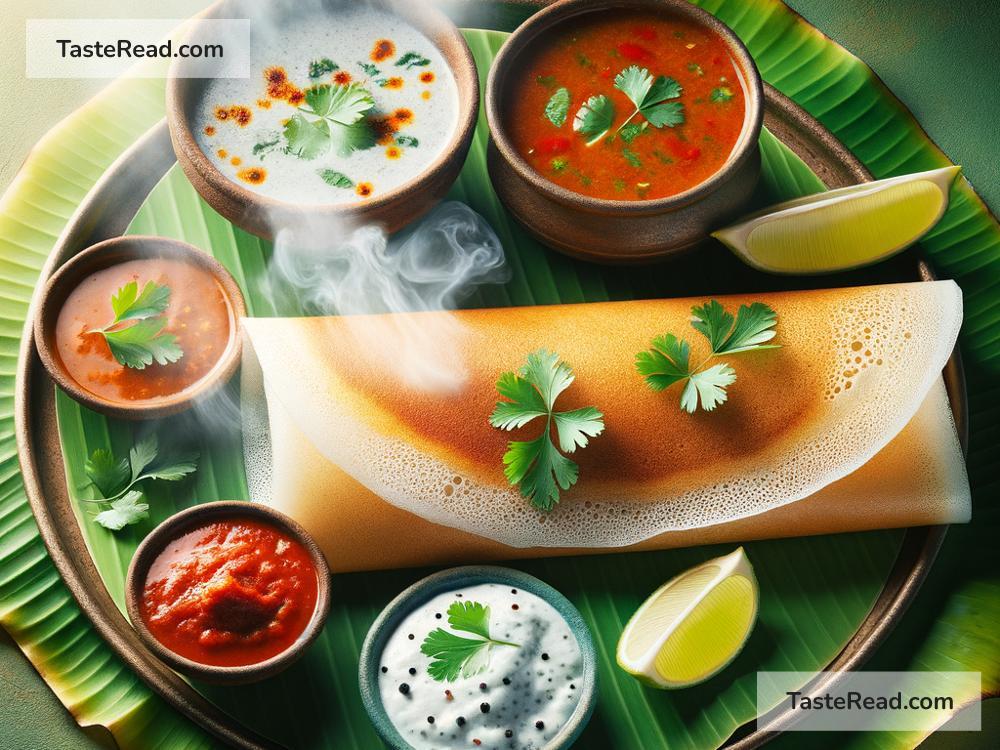The Cultural Significance of the Indian Dosa
India is a land of flavors, spices, and traditions. Among its many culinary wonders, the humble dosa holds a special place, not only as a delicious dish but also as a cultural symbol. This thin, crispy pancake made from fermented rice and lentil batter is more than just food—it’s a representation of India’s regional diversity, culinary art, and deep-rooted heritage. From bustling street vendors in South India to fine dining restaurants across the globe, the dosa has traveled far and wide, creating connections and leaving an impression wherever it goes.
A Dish with Deep Roots
The dosa originated in South India, particularly in Tamil Nadu and Karnataka, but it is loved all over the country today. Historians believe the dish has existed for over a thousand years, evolving from simple versions into the delicacies we cherish now. Early references to dosa can be found in ancient Tamil literature and old texts, highlighting its significant role in Indian culinary traditions.
It was originally made plain and soft, but as time passed, various regions started putting their own spin on it. In Karnataka, for example, people enjoy the thick and buttery set dosa, while Tamil Nadu offers varieties like the ghee roast dosa, which is thinner and crispier. These regional styles highlight the dosa’s adaptability and its ability to unite diverse communities through shared love for food.
The Perfect Pairing: Dosa and Chutney
A dosa is rarely eaten alone—it usually comes with a side of chutneys, sambar (a tangy lentil soup), and sometimes potato masala stuffed inside. Imagine biting into a crispy dosa dipped in coconut chutney or spicy tomato sauce; each mouthful is a burst of flavor. The accompaniments are different depending on the region, but they balance the dosa’s taste perfectly.
The potato masala-filled dosa, commonly called “masala dosa,” is particularly famous. In fact, it was ranked as one of the world’s top dishes by CNN in a 2011 poll. This recognition is proof of how a centuries-old Indian dish has captured the hearts of people far beyond its homeland.
A Symbol of South Indian Culture
For many Indians, the dosa is not just food—it is an identity. In South India, eating dosa is a daily ritual for families. Whether it’s breakfast at home, a snack after school, or a dinner treat, dosa is woven into everyday life. The process of making dosa batter itself is a tradition. Families soak rice and lentils, grind them into a fine paste, and leave it to ferment overnight to achieve its signature tangy taste. Recipes are often shared between generations, keeping family bonds strong.
In ceremonies and celebrations, the dosa often has a place on festive menus, symbolizing tradition and connection to roots. The act of eating with chutneys and sambar served on banana leaves during weddings or temple feasts further showcases its cultural significance.
Global Presence of Dosa
Over the years, dosa has built its own fanbase across the globe. Indian restaurants in countries like the United States, the UK, and Australia serve dosas to curious locals and expats longing for a taste of home. Food festivals and cooking shows often feature dosa-making demonstrations, sparking interest and admiration for this staple dish.
Its versatility makes it appealing to many. Those following a gluten-free diet appreciate dosa since it’s naturally made without wheat, and health-conscious eaters love its low-calorie profile. People who enjoy experimenting with flavors delight in customizing dosas—adding cheese, mushrooms, or even chocolate for modern twists.
The dosa’s journey around the world reflects India’s soft power through food. It’s not just about taste but also cultural exchange, as people understand the traditions and stories behind the food they eat.
Celebrating Regional Stories Through Dosa
Every region has its own take on the dosa, showcasing India’s cultural diversity through food. The “Mysore masala dosa” from Karnataka features a spicy red chutney spread inside, while the “Rava dosa” made with semolina flour is a crispy favorite from Tamil Nadu. Kerala offers the “egg dosa,” with an egg cracked over the batter while cooking. Meanwhile, Andhra Pradesh takes spice to the next level with fiery chutneys paired with dosa. Each version tells a story of the region it comes from.
Street food festivals, dosa competitions, and even dosa-themed restaurants in India celebrate its cultural significance. It is truly a dish that bridges the gap between tradition and innovation, making everyone feel closer to India’s vibrant food culture.
A Sense of Belonging
The dosa represents much more than a meal. It brings people together—family members chatting over breakfast, friends sharing crispy bites at roadside stalls, or strangers in a new country bonding over its familiar taste. It serves as a reminder of India’s rich heritage and the ways food can create connections.
Its cultural significance lies not just in its popularity but in the memories it creates. Whether you’re enjoying it on a banana leaf in a South Indian village or ordering it in a trendy restaurant halfway across the world, the dosa welcomes everyone to savor the rich culinary legacy of India.
So, the next time you eat a dosa, take a moment to appreciate the history, tradition, and love that go into every bite. It’s not just food—it’s a celebration of culture, heritage, and unity.


